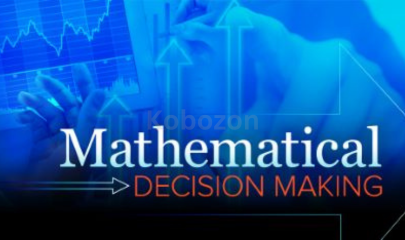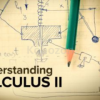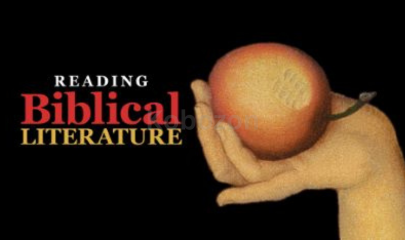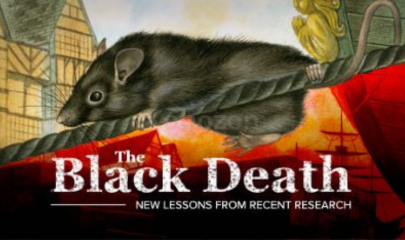Mathematical Decision Making: Predictive Models and Optimization By Scott Stevens
$239,00 $5,00
Mathematical decision making: Predictive models and optimization – Digital Download!
Let’s embark on a captivating adventure to uncover remarkable insights that spark your curiosity and elevate your understanding

Mathematical Decision Making: Predictive Models and Optimization By Scott Stevens
Overview

Mathematical decision making: Predictive models and optimization
In the realm of decision-making, the complexities of our choices can often feel overwhelming, similar to navigating a labyrinth with numerous pathways that may lead to success or failure. The course titled “Mathematical decision making: predictive models and optimization” by the esteemed Scott P. Stevens seeks to unravel this intricacy through mathematical techniques that bolster our decision-making process. Taught by an award-winning professor, this course provides a rich tapestry of mathematical principles and methodologies applicable across diverse fields such as business, government, and research. With a structured approach that spans 24 detailed lectures, the material journeys from fundamental concepts to advanced methodologies, offering learners the tools to analyze complex problems and make informed choices.
Course Overview
The course’s framework is thoughtfully articulated, presenting a progressive learning path that begins with foundational concepts. Initially, students are introduced to simple linear regression, a powerful tool that allows for forecasting based on historical data. As they build their knowledge, participants transition into more intricate topics like Monte Carlo simulations and stochastic optimization, which require a deeper understanding of probabilistic methods. This progression fosters a sense of confidence in learners, like climbing a mountain where each step reveals a new perspective of the landscape below.
Core Topics
The curriculum encompasses a diverse array of topics essential for effective decision-making:
- Linear Regression: Understanding the relationship between variables to predict outcomes.
- Optimization: Techniques that focus on maximizing or minimizing functions to achieve the best results.
- Decision Trees: A visual representation of decisions and their possible consequences, aiding in systematic thinking.
- Bayesian Analysis: A statistical method that incorporates prior knowledge with current evidence to refine predictions.
- Queuing Theory: The study of waiting lines, essential for resource allocation and efficiency improvement.
Each of these topics is rich with real-world applications, allowing learners to see the relevance of mathematical decision-making techniques in everyday scenarios, from business analytics to policy-making.
Teaching Methodology
One of the defining characteristics of Professor Scott P. Stevens’ teaching style is his ability to convey complex mathematical concepts in an accessible manner. Students have praised his clarity and enthusiasm, noting that he often simplifies difficult subjects by relating them to practical, real-life scenarios.
Engagement Techniques
Professor Stevens employs various methods to enhance engagement:
- Animated Illustrations: These visual aids help demystify abstract concepts and render them more digestible.
- Practical Examples: Real-world applications provide context, making students appreciate how mathematical techniques can resolve genuine issues.
- Interactive Discussions: Fostering a dialogue encourages students to express their thoughts, contributing to a more profound collective understanding.
Student Feedback
While the course has garnered praise, particularly for its clarity and relatability, some students have expressed a desire for deeper technical training. This feedback suggests that while the course effectively serves as an overview of analytical methods, it may not entirely satisfy those seeking a more profound mastery of advanced skills. This duality underscores the course’s appeal: it is a solid foundation for beginners while potentially lacking for advanced practitioners.
Practical Applications
The beauty of mathematical decision-making lies in its versatility and applicability across various fields. For instance, businesses can harness these techniques to optimize resource allocation, enhance forecasting accuracy, and bolster operational efficiency. Similarly, government entities can utilize these models to improve public policy decisions, ensuring that resources are allocated in the most effective manner possible.
Examples of Applications
Here are some specific scenarios where the principles from this course can provide substantial benefits:
- Supply Chain Management:
- Optimization techniques can significantly improve logistics, reducing costs, and improving service delivery.
- Marketing Analytics:
- Predictive modeling can enhance customer targeting strategies, resulting in increased ROI.
- Public Health:
- Statistical methods such as Bayesian analysis can help track disease outbreaks and forecast healthcare needs.
- Finance:
- Linear regression might be used to assess risk factors, aiding in better investment decisions.
Final Thoughts
In closing, “Mathematical decision making: predictive models and optimization” presents a compelling introduction to the world of mathematical analytics. Professor Scott P. Stevens, with his award-winning expertise, gracefully guides students through the intricacies of decision-making principles, making complex subjects not only comprehensible but also applicable.
The feedback and insights from learners reflect a course that is well-rounded, foundational, and practical, fostering an environment where analytical skills can flourish. While the desire for more advanced training exists among some, the course serves as a valuable platform for those interested in the intersection of quantitative analysis and real-world decision-making processes. For individuals eager to navigate through today’s data-driven landscape, this course offers the compass needed to make informed choices that can lead to success.
Frequently Asked Questions:
Innovation in Business Models: We use a group purchase approach that enables users to split expenses and get discounted access to well-liked courses. Despite worries regarding distribution strategies from content creators, this strategy helps people with low incomes.
Legal Aspects to Take into Account: Our operations’ legality entails several intricate considerations. There are no explicit resale restrictions mentioned at the time of purchase, even though we do not have the course developers’ express consent to redistribute their content. This uncertainty gives us the chance to offer reasonably priced instructional materials.
Quality Control: We make certain that every course resource we buy is the exact same as what the authors themselves provide. It’s crucial to realize, nevertheless, that we are not authorized suppliers. Therefore, the following are not included in our offerings: – Live coaching sessions or calls with the course author.
– Entry to groups or portals that are only available to authors.
– Participation in closed forums.
– Straightforward email assistance from the writer or their group.
Our goal is to lower the barrier to education by providing these courses on our own, without the official channels’ premium services. We value your comprehension of our distinct methodology.
Be the first to review “Mathematical Decision Making: Predictive Models and Optimization By Scott Stevens” Cancel reply
You must be logged in to post a review.

 Notion Hub - 21 Creators Ft Pascio - 100+ Templates - 15 eBooks - The Giga Brain
Notion Hub - 21 Creators Ft Pascio - 100+ Templates - 15 eBooks - The Giga Brain  The Art of Generating AI Content By Astra Gallery
The Art of Generating AI Content By Astra Gallery 

















Reviews
There are no reviews yet.